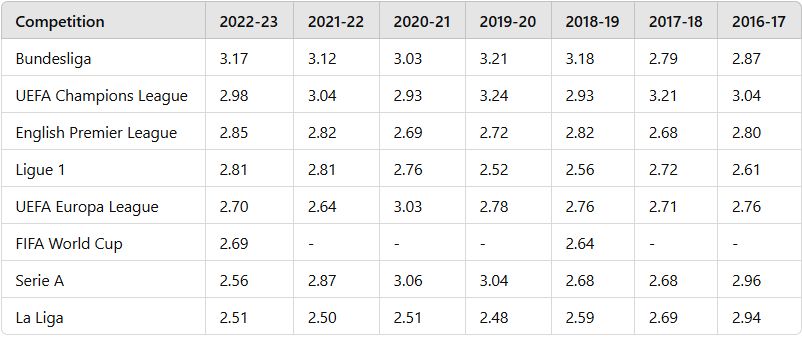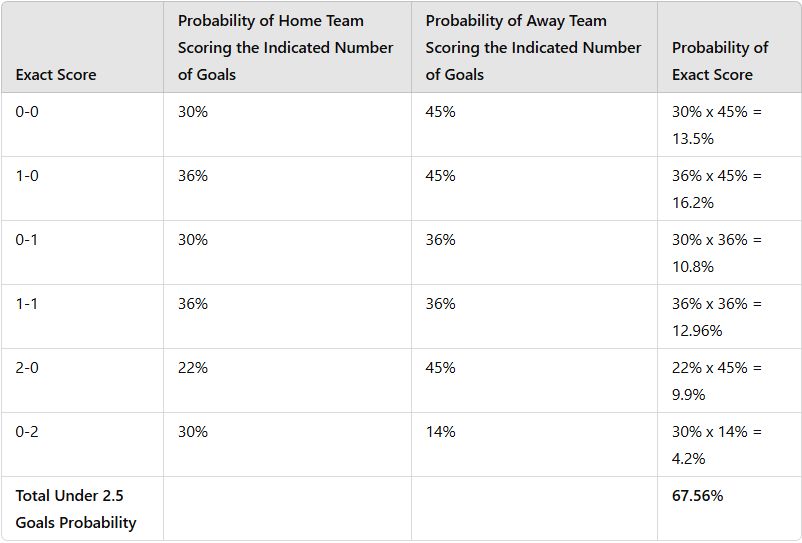Betting
How to Beat the Bookies in the Over/Under Market ?
Are you a soccer fan looking to improve your chances of winning in the Over/Under betting market? Understanding the strategies used by bookmakers and applying a data-driven approach can give you a solid edge. In this guide, we’ll walk you through a three-step method to help maximize your chances. By analyzing the average goals per game, calculating score probabilities, and identifying valuable odds, you’ll be able to make smarter betting decisions. Let’s dive into the strategy step-by-step.
Step 1: Find the Average Number of Goals per Game
Compared to most sports, goals in soccer are relatively rare, and it’s not uncommon for a match to end with no goals at all. When setting odds for the Over/Under market, bookmakers start by studying the average number of goals scored per game for the two teams involved. This statistic is critical to determining the odds.
For example, if a Premier League match has odds of 1.925 for over 2.5 goals with Pinnacle, and another bookmaker offers 1.800, you know Pinnacle provides a better option. But how can you tell if it’s worth betting on this market at all?
The best starting point is to calculate the average number of goals per game for the two teams involved in the match. This information is typically easy to find online. For example, Table 1 below shows the average goals per game in various major leagues and competitions over the past seven seasons.

As Table 1 highlights, most major soccer leagues and competitions average between 2.5 and 3 goals per game, though each league is unique. For example, last season, the Mongolian Premier League had an impressive average of 5.23 goals per game, while the Zimbabwe Premier Soccer League only managed a modest 1.94.
Step 2: Calculate the Probabilities
The random nature of goal scoring in soccer lends itself to a statistical model called the Poisson distribution, which is often used to predict Over/Under outcomes. This model helps to calculate the likelihood of various scores.
In his book Taking Chances, John Haigh created a table (shown as Table 2) that calculates the probabilities of a team scoring zero, one, two, three, or more goals, based on their average number of goals per game.

Let’s take an example where the home team averages 1.2 goals per game and the away team averages 0.8. To determine the probability of the match ending with under 2.5 goals, first identify the possible scores that result in a winning under 2.5 goals bet (0-0, 1-0, 0-1, 1-1, 2-0, and 0-2). Then, refer to Table 2 to find the probabilities for each team and multiply them to calculate the probability for each scoreline.

Since we know the individual probabilities for each score combination leading to under 2.5 goals, we can add them up to get the total probability of the match ending under 2.5 goals, thus ensuring a winning bet. In this example, it calculates as follows:
13.5% + 16.2% + 10.8% + 12.96% + 9.9% + 4.2% = 67.5%
Step 3: Determine Which Odds Are Worth Betting On
Once you have calculated the statistical probability of the match ending with fewer than 2.5 goals, you can decide which odds to accept. To convert probability into decimal odds, use the following formula:
Decimal odds = 100 / probability
In the above example, a 67.56% probability equates to decimal odds of 1.48 (100 / 67.56).
This means that you should only bet on under 2.5 goals if you find a bookmaker offering odds higher than 1.48.
While this approach doesn’t guarantee a win on every bet, it offers a straightforward betting strategy with a positive expected value. Over time, this approach can generate profits by balancing your long-term wins and losses.
By researching and analyzing each match before placing an Over/Under goals bet, you can enjoy the action with confidence, knowing you’ve given yourself the best possible chance to win.
Friday, November 8, 2024
In my same category
Betting
NFL Season 2025/2026: "The Field of Possibilities: Who Rules, Who Surprises, and Who Fades Away"
Sunday, August 31, 2025
The 2025/2026 NFL season kicks off on September 5th, and it promises to be electric ⚡️. With established superstars 🌟, hungry underdogs 💥, and franchises deep in rebuilding 🛠️, every team enters this campaign with hopes of glory. Here’s a full breakdow...
See the articleBetting
Bundesliga 2025/26: Bayern Still the Benchmark, but the Chase Is On
Wednesday, August 20, 2025
📅 Kickoff: August 22, 2025 📍 Season: 2025–2026 🎯 Goal: Keep Bayern on top — or bring them down 📊 Odds by: Pinnacle (see below)🔝 Title Contenders, Challengers & Club Ambitions🔄 Key Transfers Since June 1, 2025🔴 Bayern Munich – (1.288) 👑In: Luis...
See the articleBetting
Serie A 2025-26: Fire, Ambition, and a Battle for the Throne
Monday, August 18, 2025
The curtain is about to rise on one of the most electrifying Serie A seasons in years. Starting August 22, 2025, Italy’s top flight enters a new chapter: Napoli without Osimhen, Juventus with a new philosophy, Milan on a mission, and Inter chasing redempt...
See the article
